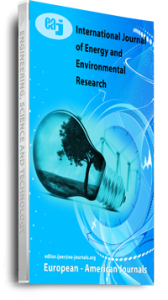This paper investigated the high power density problem cause by inefficient cooling system in nuclear power plants. Safety margin test was conducted on some typical water-cooled reactor design (WCRD) models at operational level and at an accident condition, secondly safety margin test was carried out on the thermal efficiency and thermal power output of the reactor when power supply failed and thirdly, safety margin test was perform on the reactor in relation to an increase in fuel temperature in the reactor core. The results of the statistical analysis on these types of nuclear reactor models reveals that the typical water-cooled reactor design (WCRD) models promises most stability under thermal efficiency of 45% and above.
The research implication is that the WCRD models could be significantly most stable at thermal efficiency of 45% and above. Secondly, the safety margin prediction of up to 3.1% has been validated for reactor design models on water-cooled reactor. The research effort served as an advantage over the current 5.1% challenging problem for plant engineers to predict the safety margin limit. According to Xianxun Yuan (2007, P49) in “Stochastic Modeling of Deterioration in Nuclear Power Plants Components” a challenging problem of plant engineers is to predict the end of life of a system safety margin up to 5.1% validation.
Keywords: High Fuel Temperature, High Power Density, Reactor Stability And Safety, Thermal Efficiency And Thermal Power Output, Water-Cooled Reactor Design Models Accident

